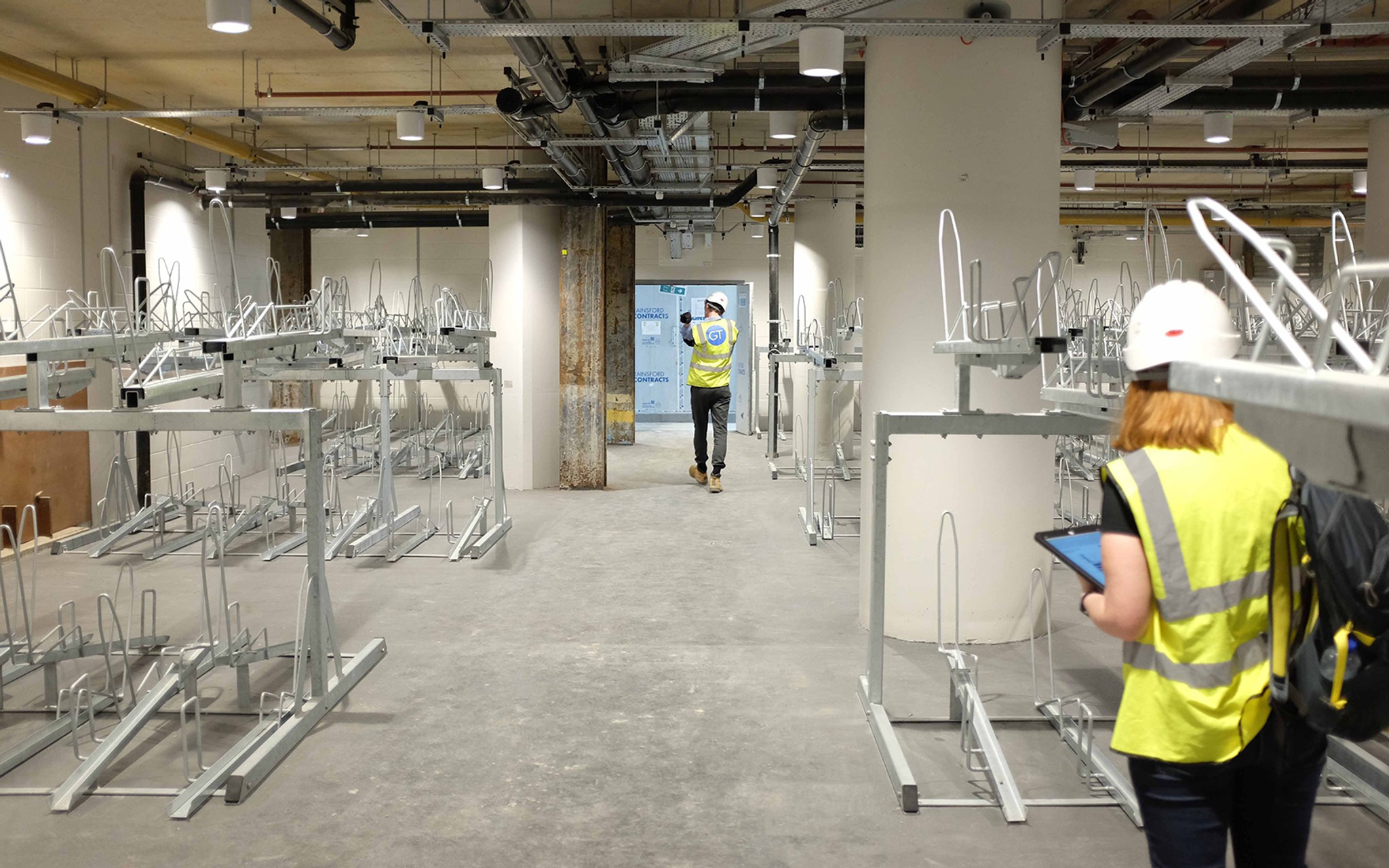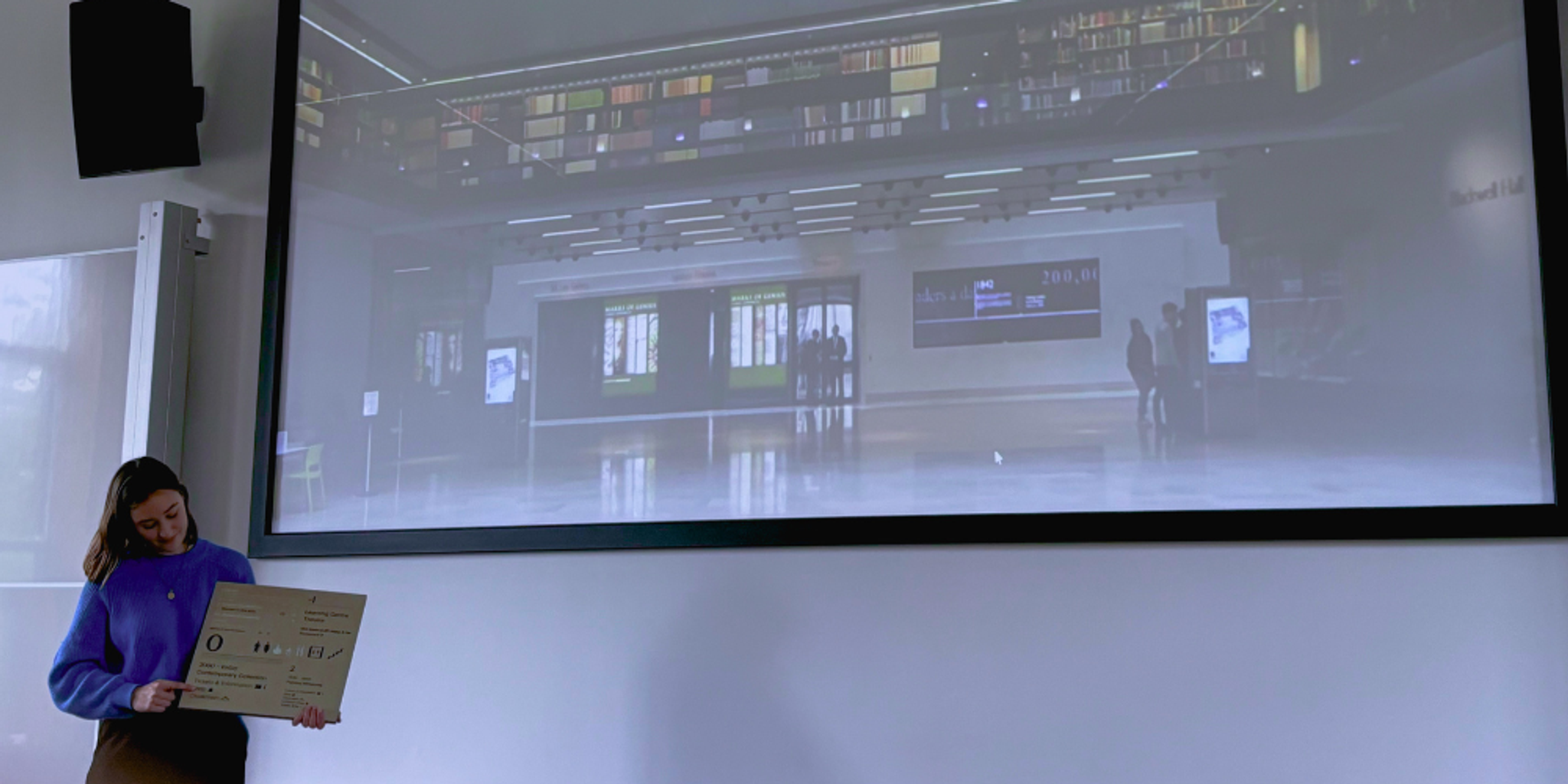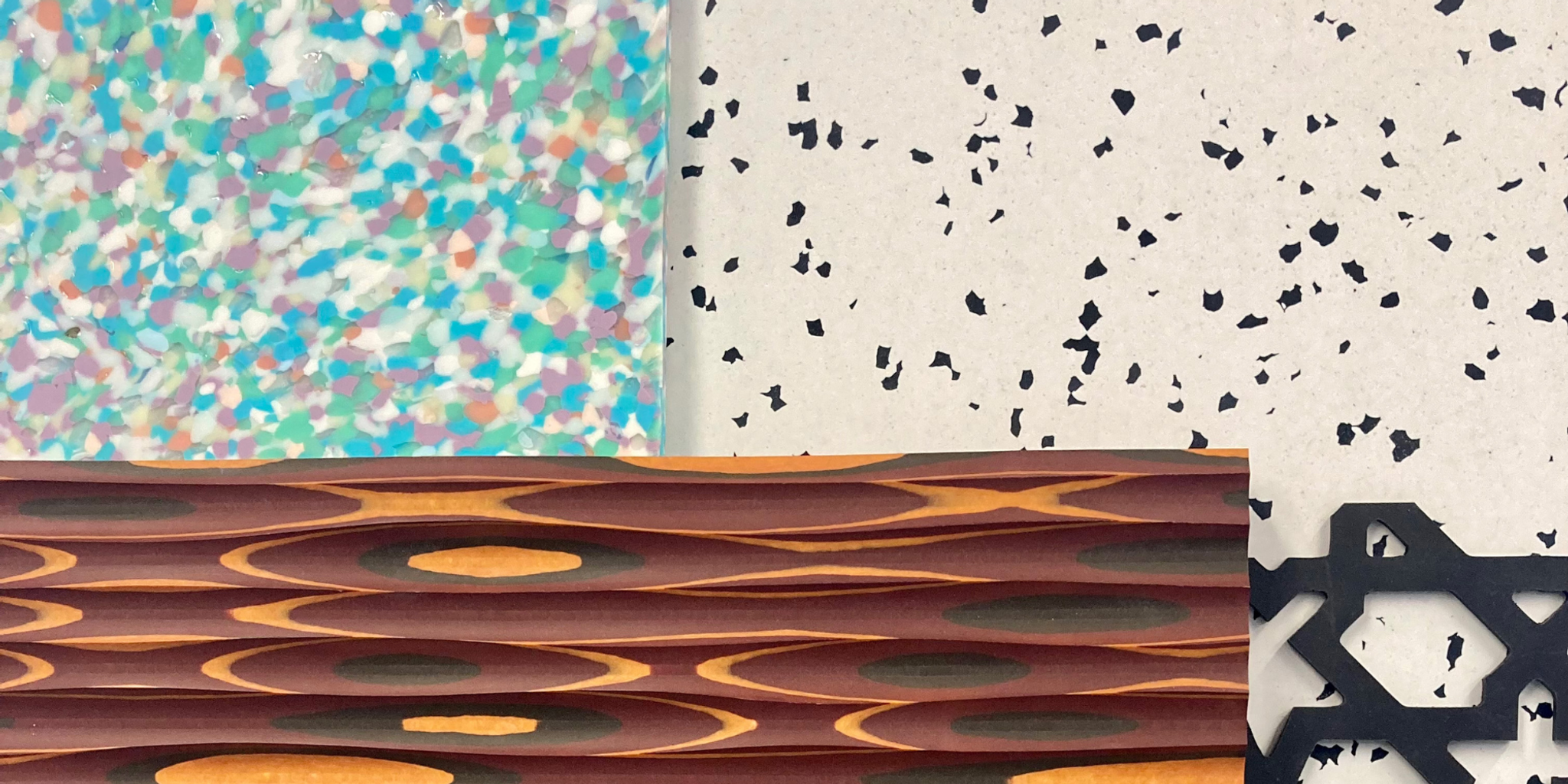News + Insight

02 August 2023
Transforming spaces: George Harvey on supergraphics in a branded environment
Tell us a bit about your role and working at Holmes Wood?
I am a Senior Graphic Designer at Holmes Wood, focussing predominately on craft and detail. Through technical skill, care and attention to detail, I’m committed to producing high-quality work for users.
I also help mentor some of the more junior members of the team, sharing knowledge and helping to build confidence in their own work.
What do you love most about what you do?
Seeing our work develop into physical, tangible objects that have a sense of permanence. I also enjoy the flexible nature of the role as we’re constantly having to adapt to and be coherent with the built environment surrounding our schemes.
Who or what inspires your work?
I suppose people are seen as inspiration, it’s exciting to see how different people interact with what we produce. Studying these varying interactions also means we’re always learning and developing from one scheme to the next. It’s fulfilling to be able create work that has a positive impact on people’s lives.
What has been your favourite project and why?
A favourite project, and career highlight for me, has certainly been working on the environmental graphics for the cycle store as part of the new Paddington Square development. I led the design and set out principles for the cycle store, ensuring users had a way of locating their bike in a busy environment but also providing engaging graphics in an otherwise mundane space.
We were able to develop and implement bold environmental graphics for the space, with strips of colour and typography connecting across different planes.

This really felt like a full circle moment for me as, during my degree, I became fascinated with supergraphics and wrote about how this type of intervention was a way of connecting graphic design and architecture. The term supergraphics was coined in the 1960s by architectural theorist, C. Ray Smith and referred to paint or graphics applied to a surface, internally or externally, that distort the building and appear to burst out of the surface that they’re applied to.
Discovering supergraphics had a huge impact on my personal work and it’s exciting to be able to properly explore this through professional work.
Can you tell us more about the project itself?
Paddington Square is a new mixed-used development right outside of Paddington Station and houses many workspace, retail and F&B offers. The architects, Renzo Piano Building Workshop, commonly have an element of colour running through their schemes. In our wider wayfinding scheme, we connect with this by subtly implementing these colours into our signs through edge or spacer details.
The colours we’ve used in the cycle store build upon the colour palette the architects set out through the wider development. The idea was to create something bold and colourful to help elevate a space that is usually seen as dull or even go completely unnoticed.
What challenges did you face with this project?
We had to adapt our original design to work around double-height bike racks that were due to be installed at a later stage. We scaled back the coverage to the available wall and floor space, working around the mounted racks, creating strips of colour that connect the large wall numerals and entrances. A classic example of problem solving through wayfinding.

The lack of natural light was compensated for with a bright colour palette, creating a bright, warm environment through the striking use of yellow and teal. We experimented with many colour ways until we arrived at what we thought worked best in the space and matched the architectural palette. The urban aesthetic was developed further by creating a ‘hazard tape’ effect on the pillars using the same colours.

What is exciting you in creative design right now?
A lot of our clients are more interested in us providing bolder solutions for people to engage with spaces, particularly with placemaking. Large, interactive interventions can be key in creating exciting environments and maximising footfall in a post-pandemic world. We continue to think of new ways of harmoniously injecting graphics to the built environment and seek out opportunities to do so.


